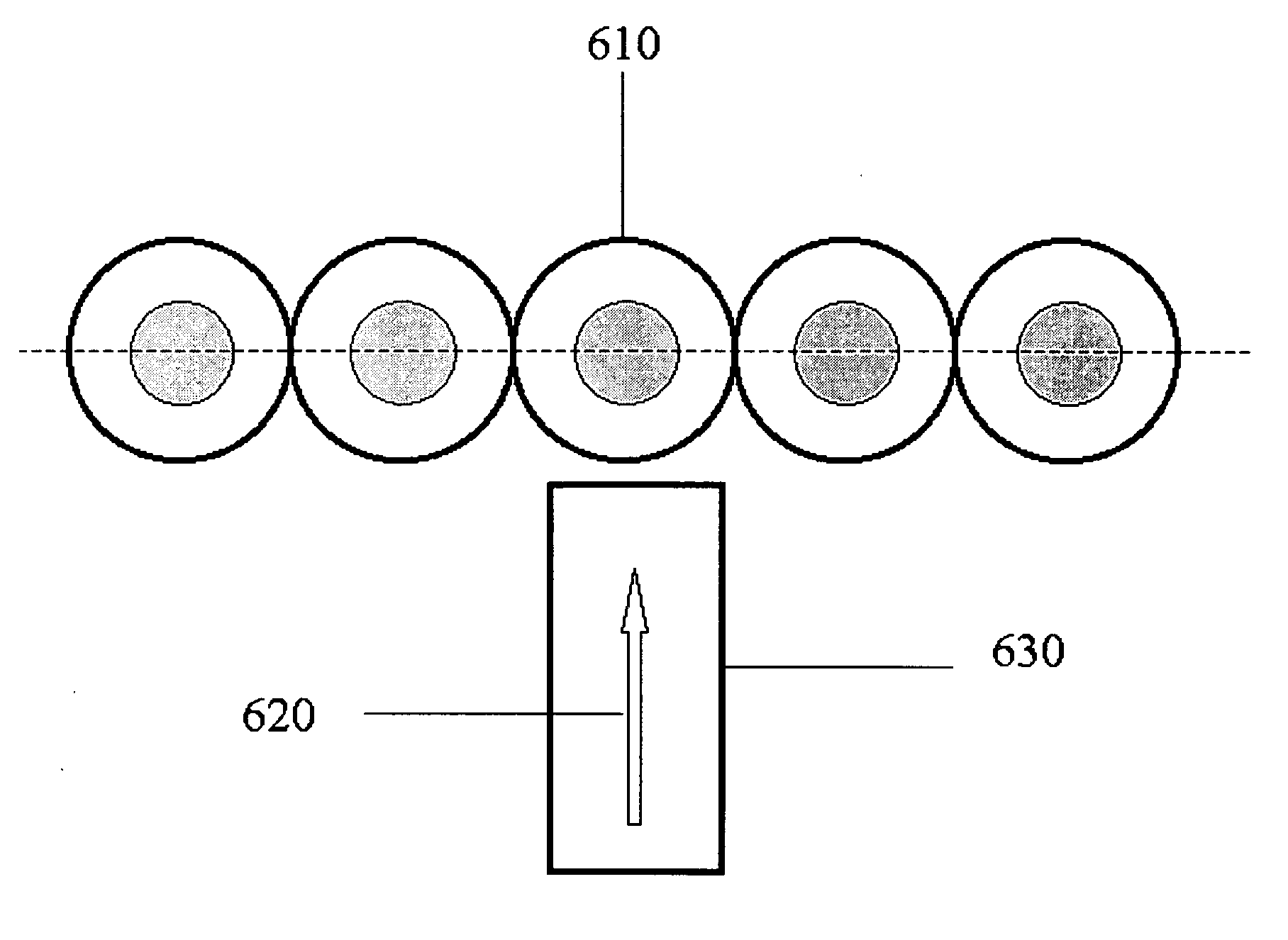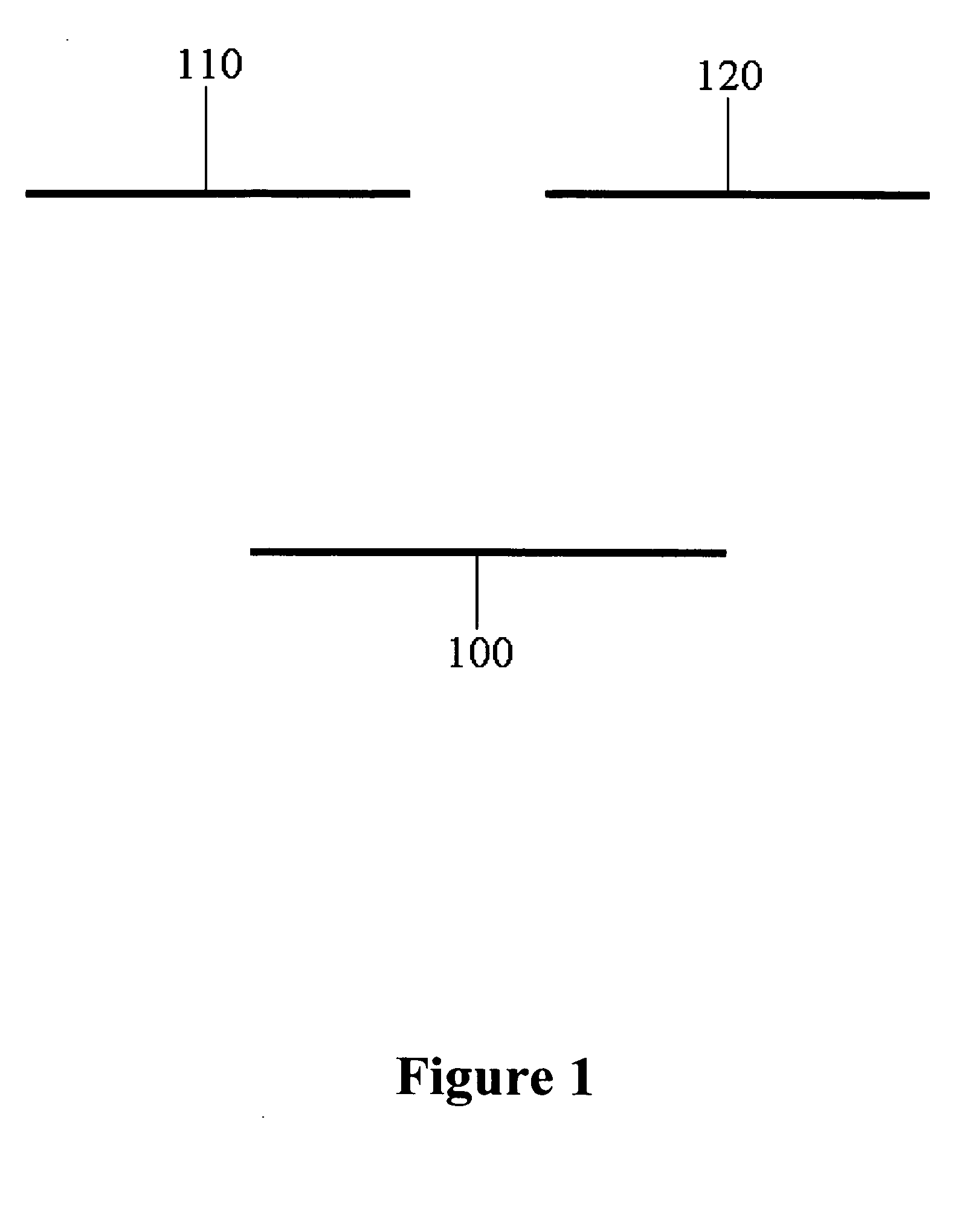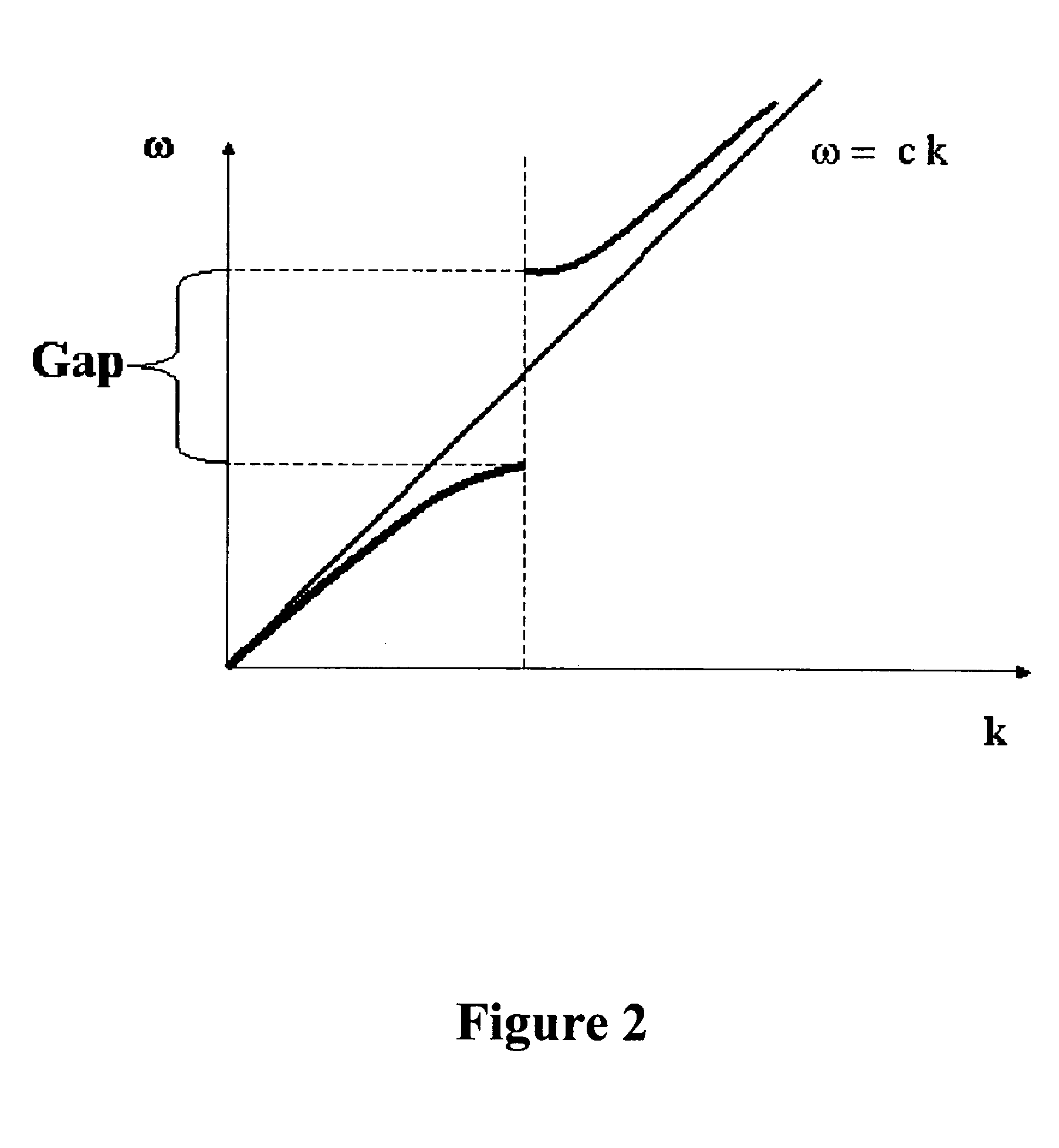Nanophotonic devices based on quantum systems embedded in frequency bandgap media
a quantum system and quantum technology, applied in the direction of active medium materials, semiconductor lasers, instruments, etc., can solve the problems of long switching time and high power requirements, response time limit the switching time of the device, and significant practical challenges, etc., to achieve easy control, enhance nonlinearity, and high efficiency
- Summary
- Abstract
- Description
- Claims
- Application Information
AI Technical Summary
Benefits of technology
Problems solved by technology
Method used
Image
Examples
Embodiment Construction
[0033] The preferred embodiments are directed to a new type of nanophotonic materials, devices and integrated nanophotonic circuits for both classical and quantum optical signal processing, including optical quantum computing, transmission and generation of light. A key element of the preferred embodiments of nanophotonic devices is a waveguide made of quantum systems embedded in a frequency bandgap medium, provided that the transition frequency of at least one of the optical transitions of the quantum systems lies inside the photonic bandgap of the frequency bandgap medium. The present invention will be more clearly understood and further applications will be apparent when detailed descriptions of preferred embodiments of the invention are made for a specific realization of the invention based on semiconductor quantum dots embedded in photonic crystals (photonic bandgap materials). Moreover, making use of the quantum dots for practical implementation of quantum system waveguides ha...
PUM
 Login to View More
Login to View More Abstract
Description
Claims
Application Information
 Login to View More
Login to View More - R&D
- Intellectual Property
- Life Sciences
- Materials
- Tech Scout
- Unparalleled Data Quality
- Higher Quality Content
- 60% Fewer Hallucinations
Browse by: Latest US Patents, China's latest patents, Technical Efficacy Thesaurus, Application Domain, Technology Topic, Popular Technical Reports.
© 2025 PatSnap. All rights reserved.Legal|Privacy policy|Modern Slavery Act Transparency Statement|Sitemap|About US| Contact US: help@patsnap.com



